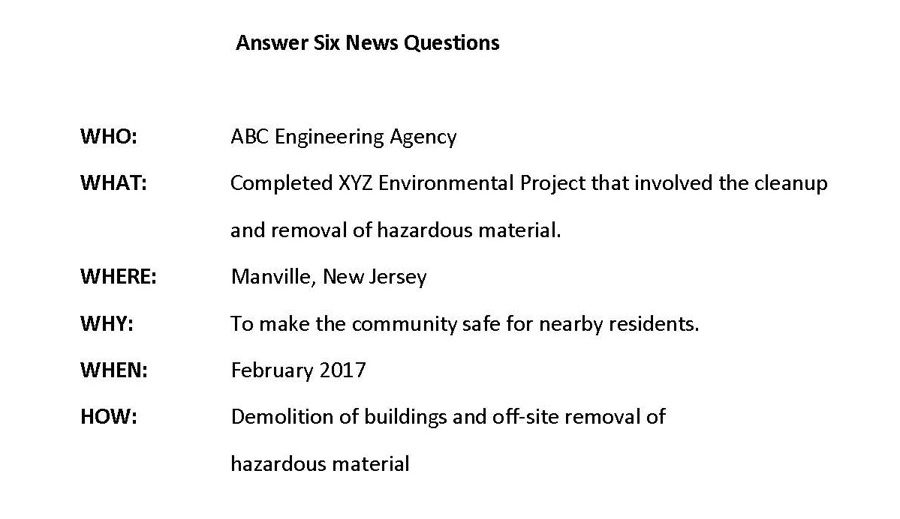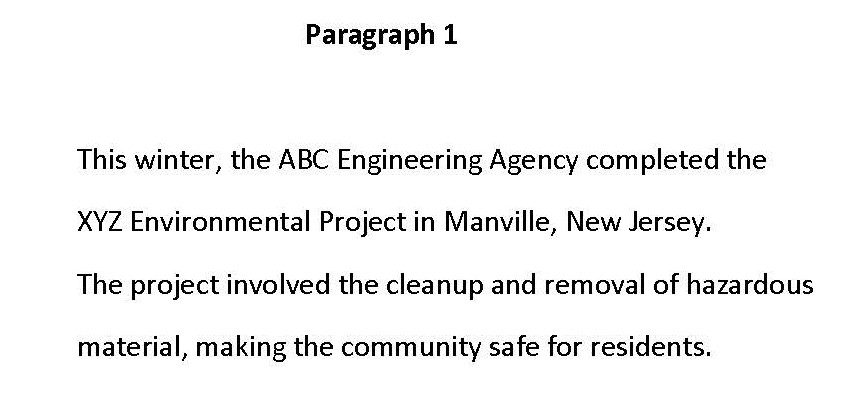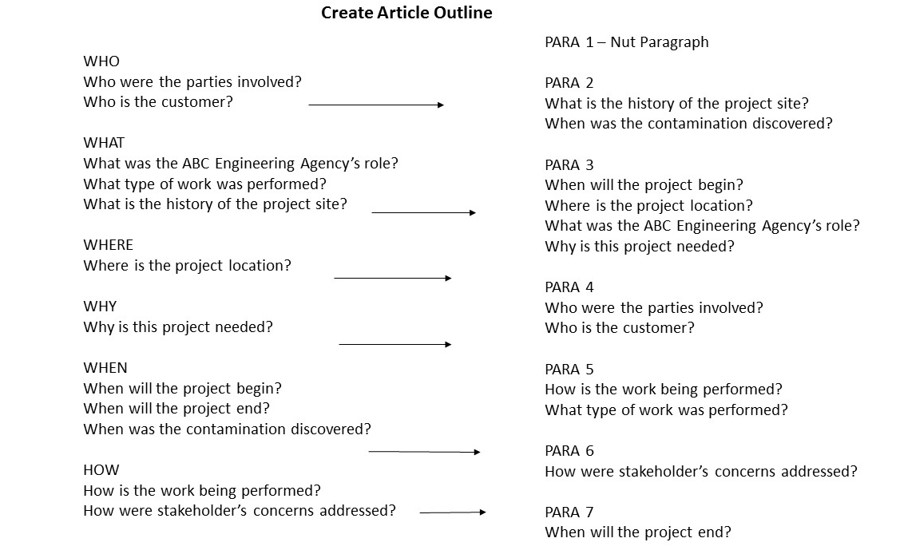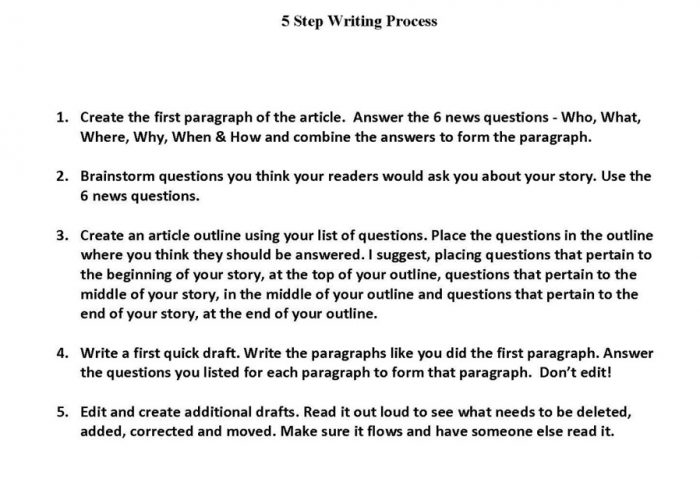We’ve seen the headlines … “Print media is dying, magazine slashes staff, newspaper goes completely digital.” This got me thinking — what does this mean for editors trying to get news content for their publications.
I went straight to the source and spoke with a few trade magazine editors. They told me that due to magazine staff downsizing and increased public demand for online services, many editors are hungry for more writing from outside industry experts.
Right now is an ideal time for experts in various businesses to get articles published with trade magazines. This can bring numerous benefits for business owners including gaining positive visibility, forming partnerships and increasing your bottom line.
Bob Drake, Editor, Civil + Structural Engineer Magazine said, “Fewer editors on staff and expanded responsibilities for online content have increased the time demands on trade magazine editors and is leaving less time for staff-generated content.”
“Consequently, we more often — sometimes exclusively — rely on editorial contributed by readers and other groups aligned with our readers and markets.”
Fewer editors on staff also means less expertise on staff. “Fewer editors on staff are leaving “niche areas where inside knowledge is needed,” said Tony Slinn, retired former Editor-in-Chief of IHS Fairplay and now a freelance maritime journalist.
“This is where editors will turn to outside specialists for help, assured that the facts and figures will be accurate and the story will appeal to readers looking for insight.”
Get published using an easy 5 step writing process!
I provide a workshop that educates businesses on how they can quickly write an article for publishing. The method is an easy five step process that combines Information Mapping techniques along with methods I’ve developed as a writer over the years. Information Mapping is a technique of dividing and labeling information for easy comprehension, use and recall.
Following is information from this workshop.
Before you write
Before you begin to write you need to know what your story idea is and who your readers are.
Your story idea should be timely and discuss something that would be of interest to your readers.
For example, is your company starting up a project, taking part in an upcoming event or experiencing a major accomplishment?
5-Step Writing Process
STEP 1: Write First Paragraph
Write the first paragraph, or Nut Paragraph, to your article. The first paragraph is called the Nut Paragraph because it should capture the entire story in a nutshell.
To create the first paragraph, you should answer the six news questions – Who, What, Where, Why, When, and How with short, single sentence answers, as they pertain to your story. See example below.
Combine the answers to these questions to create your first paragraph. It’s OK if you don’t get all of the answers in the first paragraph, but you should try to get most of them. The rest of the answers can be moved to the next paragraph. See example below:
You may be wondering – Why do I have to cram all of this information in the first paragraph? The reason for this is because many readers today skim the beginning of articles and don’t read them in full. If the first paragraph intrigues them, they may read more of the article. This is why it’s important to get the key article information at the very beginning of the article.
STEP 2: Brainstorm Questions
Brainstorm a list of questions that you feel your readers would ask you about your story. Use the six news questions. Think of several Who, What, Where, Why, When and How questions.
Make believe you’re speaking with someone about your project, preferably someone who isn’t familiar with it. What questions would they ask you about the project?
It doesn’t matter how many questions you come up with or if some are redundant. See example below.
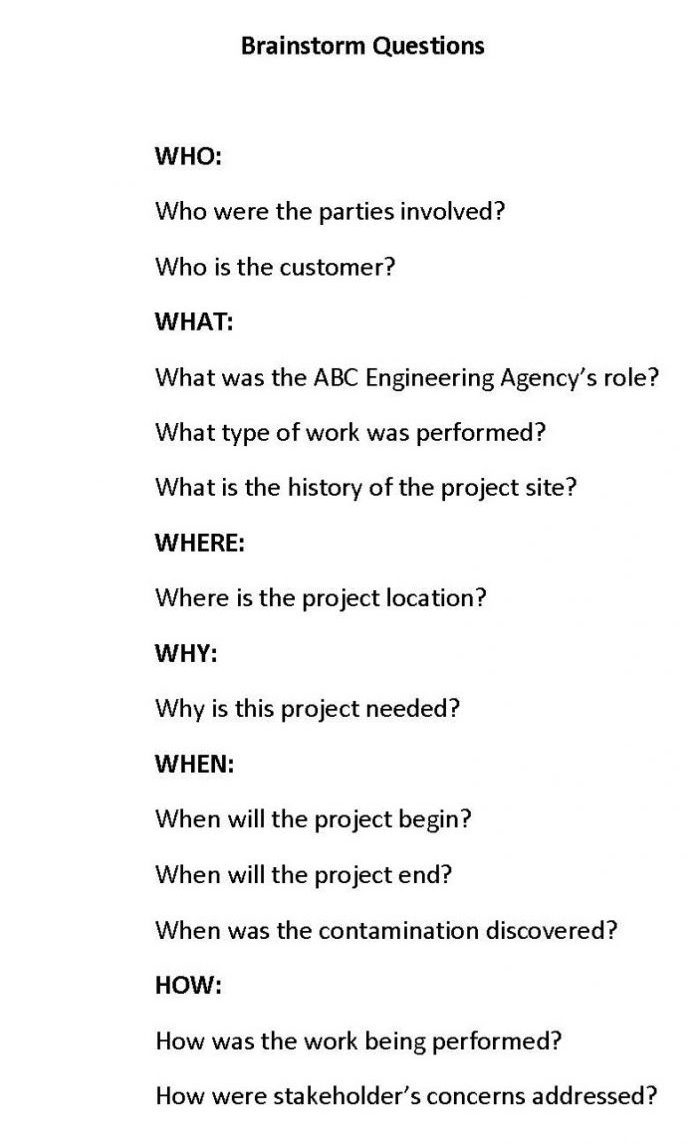
STEP 3: Create Article Outline
Take your list of questions and move them into an article outline. Place the questions in the paragraphs of the outline where you feel they should be answered. See example below.
I suggest that you think of the beginning, middle and end of your story as the beginning, middle and end of your outline. This will help you decide where to place the questions in the outline.
For example, if you’re writing an article about a project you recently completed, the beginning of your outline would answer questions that pertain to the beginning of your project, such as the project’s history or what initiated the project; the middle of your outline would answer questions about what occurred during the project, such as the project’s construction; and the end of the outline would answer questions about the completion of the project and what’s going to happen in the future.
Don’t go crazy overthinking this. The idea is to get your questions placed somewhere on the outline.
STEP 4: Write First Quick Draft
Now that you’ve created an article outline, it’s time to write a first quick draft of your article.
You’ve already created the first paragraph or the Nut Paragraph. Now you will write the remaining paragraphs of the article. You’re going to create the remaining paragraphs the same way you created the first paragraph.
Create each additional paragraph by answering the questions you’ve listed in the outline for the paragraph. It’s OK if it takes you more then one paragraph to answer the questions. See example below.
If you realize that answering a question doesn’t seem suitable in an area of the article, then put the question aside to be answered somewhere else in the article.
Your quick draft should really be performed fast. Don’t stop writing to edit or look up facts. You can do this later.
STEP 5: Edit
Now you can edit and create additional drafts.
Read your article out loud. Hearing your words will help you catch spelling and grammar errors and see where information needs to be corrected, moved, added or deleted.
Removing unnecessary information is important because most editors require article submissions be no more then 2-3 pages, double spaced, and 12-point font. Please consult publications for their specific requirements.
Keep the article concise by keeping these writing tips in mind: Paragraphs should be no more then 1-2 sentences that express one thought; sentences should be short and express a single thought; and words should be simple and not hard for readers to understand.
Make sure your article flows. Paragraphs should logically transition from one to the other.
Your writing should be conversational and in the active voice. Write how you speak. In other words, how you would verbally explain something to someone is how you should write it.
Also have someone else read your article, preferably someone not in your field and unfamiliar with your subject matter, because they will be able to quickly notice when something is unclear.
Beyond the 5 Steps …
First impressions are important
At the top of your article include an effective title to draw readers in.
In the title, try to include most of the six news questions including – Who, What, Where, Why, When and How.
Why? As mentioned earlier, people skim the beginning of articles before they consider reading the whole piece and this includes skimming the title. This is why it is important to get the key article information in the title. See example below.
“New Jersey community free of hazardous material”
Help readers understand with images
Visuals are vital to an article’s success in communicating your story. Images that show what you explain in your article will help readers grasp what you’re trying to describe for them.
Photographs should be high quality digital images showing people in action. Always use captions describing what’s being shown in the photo, including the full names of individuals in the photo. Also, give credit to the photographer or if a graphic, the creator. Images obtained from other organizations require their written permission to use.
Close the deal
At the bottom of your article include a way for readers to reach you – after all a big benefit of getting published is to meet people and potentially gain business. This can simply mean providing a short bio with your email address and website.
Find a Home-Based Business to Start-Up >>> Hundreds of Business Listings.












































